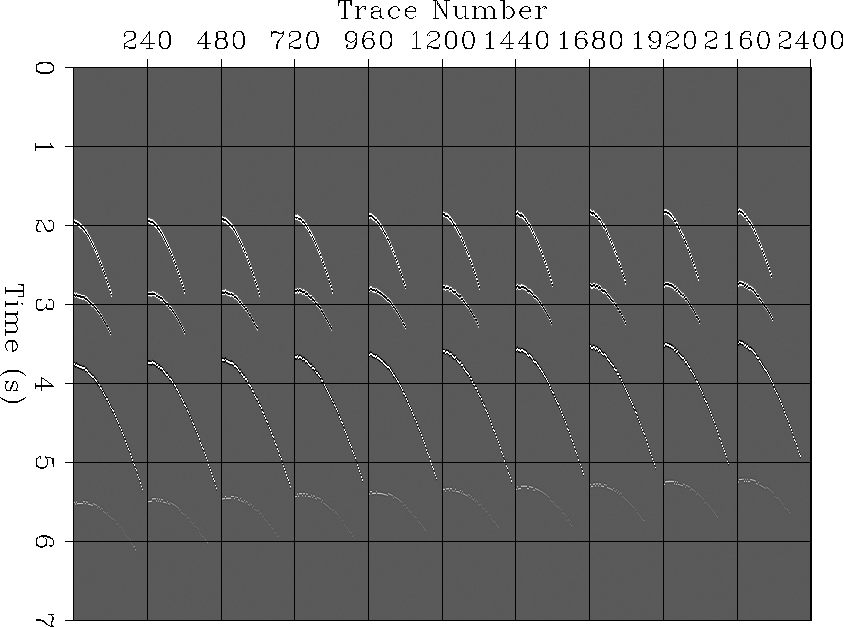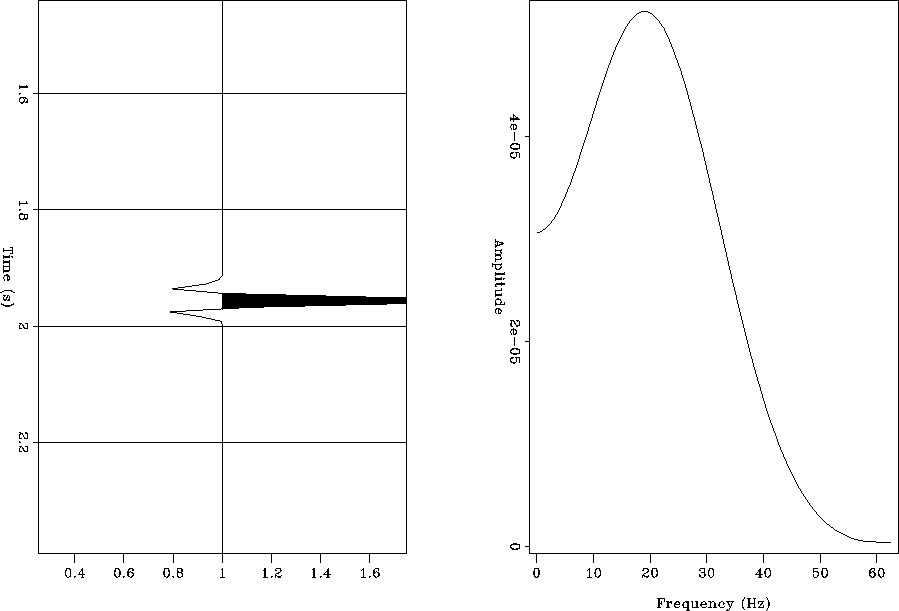




Next: Data Subset for S-R
Up: Alvarez and Biondi: 3D
Previous: Introduction
The velocity model used to generate the synthetic data is shown in
Figure ![[*]](http://sepwww.stanford.edu/latex2html/cross_ref_motif.gif) . The water
bottom is deep, flat on the inline direction and dipping at 15 degrees in
the crossline direction. The only reflector is a plane dipping 3
degrees in the inline direction and 15 degrees in the crossline direction.
model_vel
. The water
bottom is deep, flat on the inline direction and dipping at 15 degrees in
the crossline direction. The only reflector is a plane dipping 3
degrees in the inline direction and 15 degrees in the crossline direction.
model_vel
Figure 1 3-D velocity model.





The geometry of acquisition consists of 10 receiver lines, each with 240
receivers spaced 25 m, with the first receiver at an inline offset of
100 m from the source. The maximum inline offset is therefore 6075 m. The
receiver line separation is 100 m and the source is dual flip-flop with
the two sources separated 50 m in the crossline direction and centered
between the two middle streamers with a 25 m crossline distance from the
closest streamer.
There are a total of 6 sail lines with each sail line separated from the
next by a crossline distance of 450 m. With this arrangement, the crossline
fold is just one and the fold in the inline direction is 60.
Figure ![[*]](http://sepwww.stanford.edu/latex2html/cross_ref_motif.gif) shows a schematic of two adjacent sail lines
illustrating that there is no overlap between the CMP coverage of each
sail line.
Figure
shows a schematic of two adjacent sail lines
illustrating that there is no overlap between the CMP coverage of each
sail line.
Figure ![[*]](http://sepwww.stanford.edu/latex2html/cross_ref_motif.gif) shows the receiver map, the source map, the
azimuth-offset distribution and the fold map, all typical of a dual source
flip-flop acquisition.
shows the receiver map, the source map, the
azimuth-offset distribution and the fold map, all typical of a dual source
flip-flop acquisition.
sketch2
Figure 2 Schematic of fold coverage of two
adjacent sail lines.
 attributes
attributes
Figure 3 Top left: receiver map.
Top right: source map. Bottom left: azimuth-offset distribution.
Bottom right: fold map.





Figure ![[*]](http://sepwww.stanford.edu/latex2html/cross_ref_motif.gif) shows a typical source record. The 10 receiver lines
are clearly seen. There are four reflections: the water-bottom primary, the
deeper reflector primary, the water-bottom multiple and the peg-leg reflection
between the water-bottom and the deeper reflection. Notice the change in
polarity of the multiples as compared to the primaries.
Figure
shows a typical source record. The 10 receiver lines
are clearly seen. There are four reflections: the water-bottom primary, the
deeper reflector primary, the water-bottom multiple and the peg-leg reflection
between the water-bottom and the deeper reflection. Notice the change in
polarity of the multiples as compared to the primaries.
Figure ![[*]](http://sepwww.stanford.edu/latex2html/cross_ref_motif.gif) shows a close up of the wavelet and the wavelet
spectrum which shows that the wavelet has a DC component.
shows a close up of the wavelet and the wavelet
spectrum which shows that the wavelet has a DC component.
shot
Figure 4 A typical ``shot'' gather showing the 10
receiver lines. Notice the polarity inversion of the multiples.




 spectrum
spectrum
Figure 5 Close up of the seismic wavelet (a)
and its frequency spectrum (b). Notice the uncharacteristic low frequencies.










Next: Data Subset for S-R
Up: Alvarez and Biondi: 3D
Previous: Introduction
Stanford Exploration Project
4/6/2006
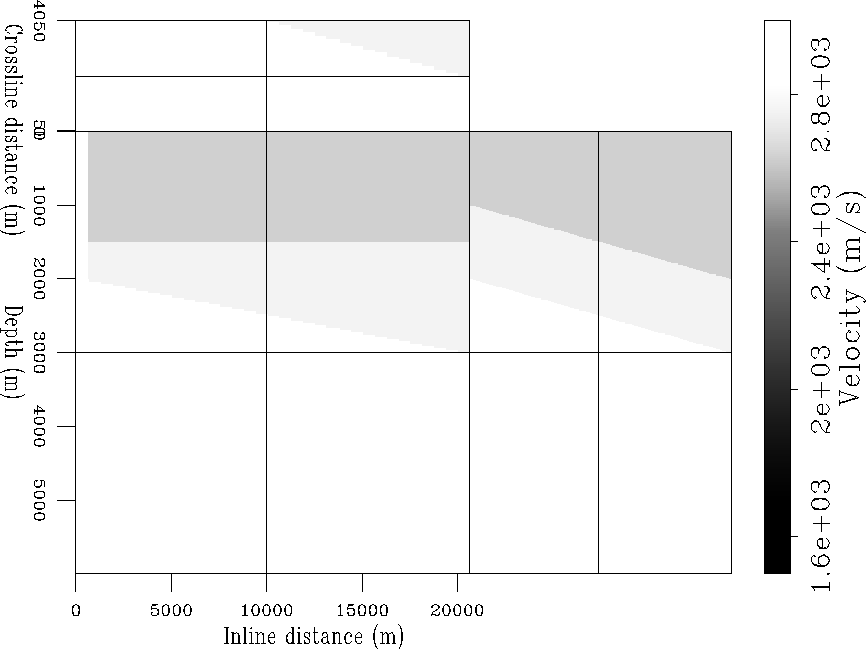
![[*]](http://sepwww.stanford.edu/latex2html/cross_ref_motif.gif) . The water
bottom is deep, flat on the inline direction and dipping at 15 degrees in
the crossline direction. The only reflector is a plane dipping 3
degrees in the inline direction and 15 degrees in the crossline direction.
. The water
bottom is deep, flat on the inline direction and dipping at 15 degrees in
the crossline direction. The only reflector is a plane dipping 3
degrees in the inline direction and 15 degrees in the crossline direction.

![[*]](http://sepwww.stanford.edu/latex2html/cross_ref_motif.gif) shows a schematic of two adjacent sail lines
illustrating that there is no overlap between the CMP coverage of each
sail line.
Figure
shows a schematic of two adjacent sail lines
illustrating that there is no overlap between the CMP coverage of each
sail line.
Figure ![[*]](http://sepwww.stanford.edu/latex2html/cross_ref_motif.gif) shows the receiver map, the source map, the
azimuth-offset distribution and the fold map, all typical of a dual source
flip-flop acquisition.
shows the receiver map, the source map, the
azimuth-offset distribution and the fold map, all typical of a dual source
flip-flop acquisition.
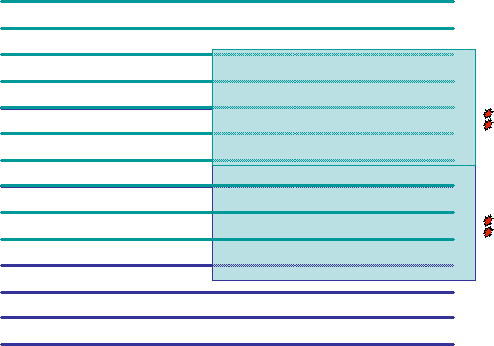
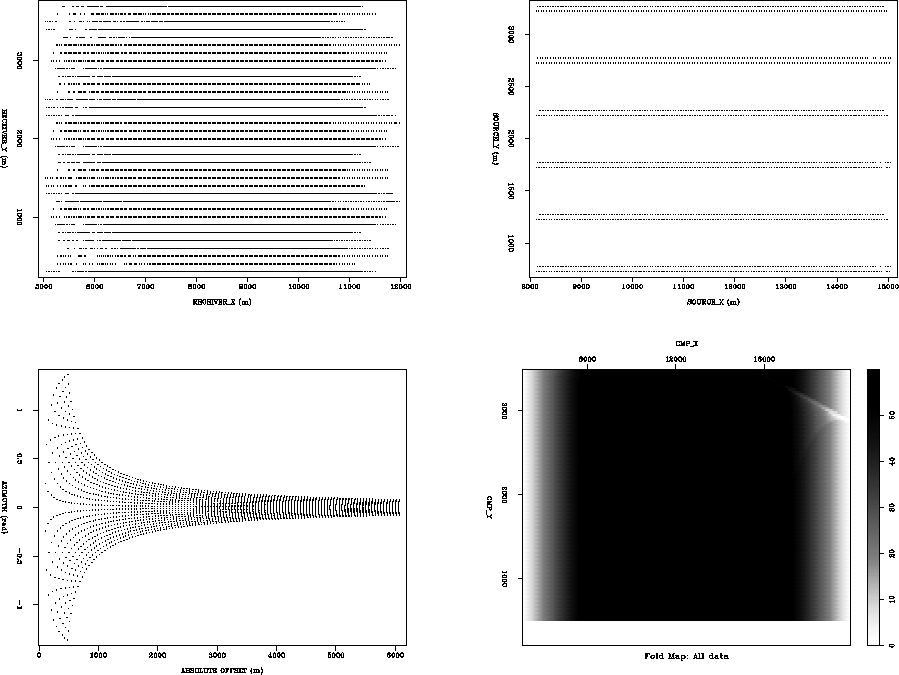
![[*]](http://sepwww.stanford.edu/latex2html/cross_ref_motif.gif) shows a typical source record. The 10 receiver lines
are clearly seen. There are four reflections: the water-bottom primary, the
deeper reflector primary, the water-bottom multiple and the peg-leg reflection
between the water-bottom and the deeper reflection. Notice the change in
polarity of the multiples as compared to the primaries.
Figure
shows a typical source record. The 10 receiver lines
are clearly seen. There are four reflections: the water-bottom primary, the
deeper reflector primary, the water-bottom multiple and the peg-leg reflection
between the water-bottom and the deeper reflection. Notice the change in
polarity of the multiples as compared to the primaries.
Figure ![[*]](http://sepwww.stanford.edu/latex2html/cross_ref_motif.gif) shows a close up of the wavelet and the wavelet
spectrum which shows that the wavelet has a DC component.
shows a close up of the wavelet and the wavelet
spectrum which shows that the wavelet has a DC component.
